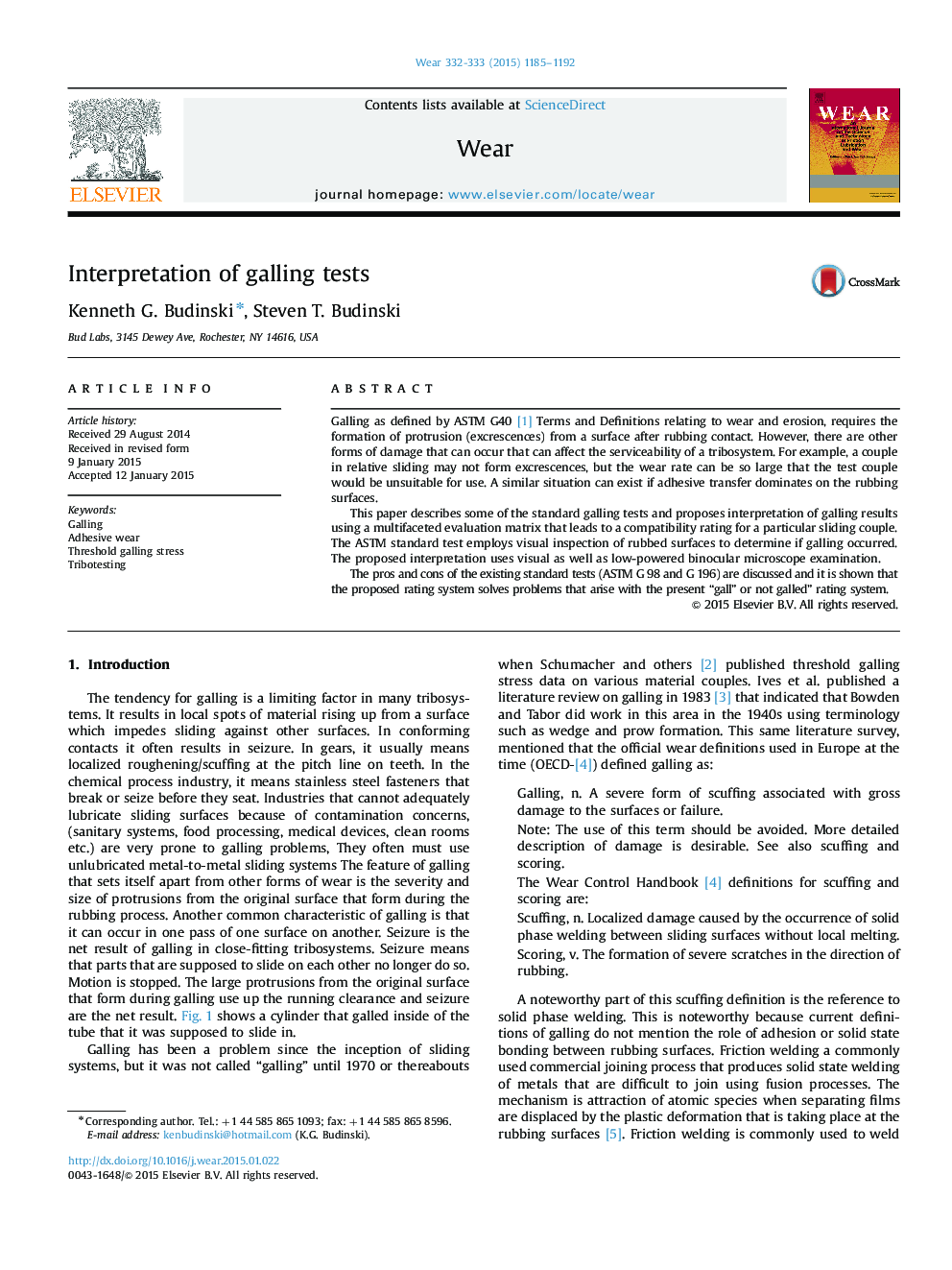| Article ID | Journal | Published Year | Pages | File Type |
|---|---|---|---|---|
| 617130 | Wear | 2015 | 8 Pages |
•The terminology relating to galling is reviewed and clarified.•The advantages and disadvantages of available galling tests are discussed.•Guidelines are presented on how to test for threshold galling stress (TGS).•Galling results are described with photos and schematics for use in a galling matrix.•Test data are presented that show that surface texture can significantly affect TGS.
Galling as defined by ASTM G40 [1] Terms and Definitions relating to wear and erosion, requires the formation of protrusion (excrescences) from a surface after rubbing contact. However, there are other forms of damage that can occur that can affect the serviceability of a tribosystem. For example, a couple in relative sliding may not form excrescences, but the wear rate can be so large that the test couple would be unsuitable for use. A similar situation can exist if adhesive transfer dominates on the rubbing surfaces.This paper describes some of the standard galling tests and proposes interpretation of galling results using a multifaceted evaluation matrix that leads to a compatibility rating for a particular sliding couple. The ASTM standard test employs visual inspection of rubbed surfaces to determine if galling occurred. The proposed interpretation uses visual as well as low-powered binocular microscope examination.The pros and cons of the existing standard tests (ASTM G 98 and G 196) are discussed and it is shown that the proposed rating system solves problems that arise with the present “gall” or not galled” rating system.
